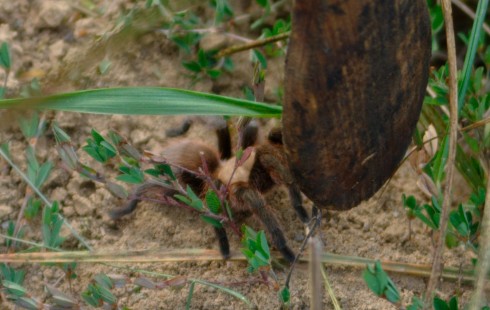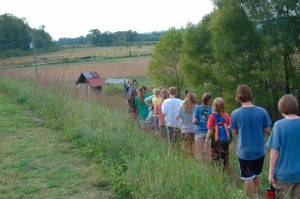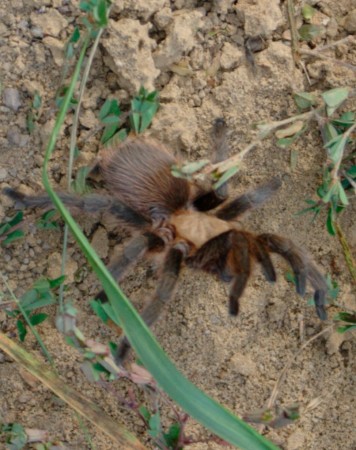
We ran into this young tarantula on the path between the Zambian and Thai houses in Heifer International’s global village in Arkansas. We were taking the tour, and while this young fellow (probably male according to Zaq our guide) was not part of the regular schedule, we were lucky to find him. While tarantulas are venomous (mildly), and some have stinging hairs, their bites are about as painful as a bee sting (Warriner, 2011). But they are large, and, since most of us have a visceral fear of large arachnids, they’re pretty awesome to encounter (charismatic megafauna – is the term I like to use).

Tarantulas arrived in Arkansas about 8000 years ago (Warriner, 2011) at the height of the warmer, drier climate that followed the melting of the great North American glaciers about 10,000 years ago. The climate of Arkansas has gotten a bit wetter since then, but the spiders survive in isolated, drier upland areas (according to the Arkansas Tarantula Survey), like bits of grassland surrounded by forest. Pretty much like the grassy slope between the Thai and Zambian houses in the global village.
They can live to be 10-20 years old, which I think is pretty impressive for a spider.
Tarantulas usually just hang out at the mouth of their burrow and ambush anything that looks like prey to them. This includes insects and other spiders, but sometimes even lizards and very small mammals.
Identifying tarantula species is apparently difficult because their differences are usually quite subtle. The Arkansas chocolate tarantula (Aphonopelma hentzi), “is presumed to be Arkansas’ only tarantula species” (Barnes, 2002).
If you annoy them (with something like the Wooden Spoon of Silence) tarantulas will rear up and look menacing. Which is pretty awesome.

